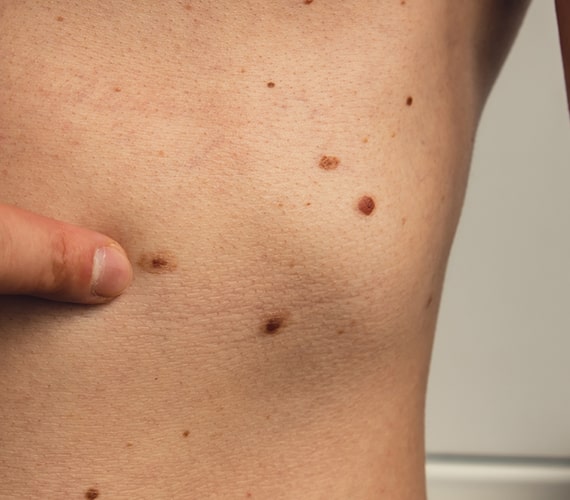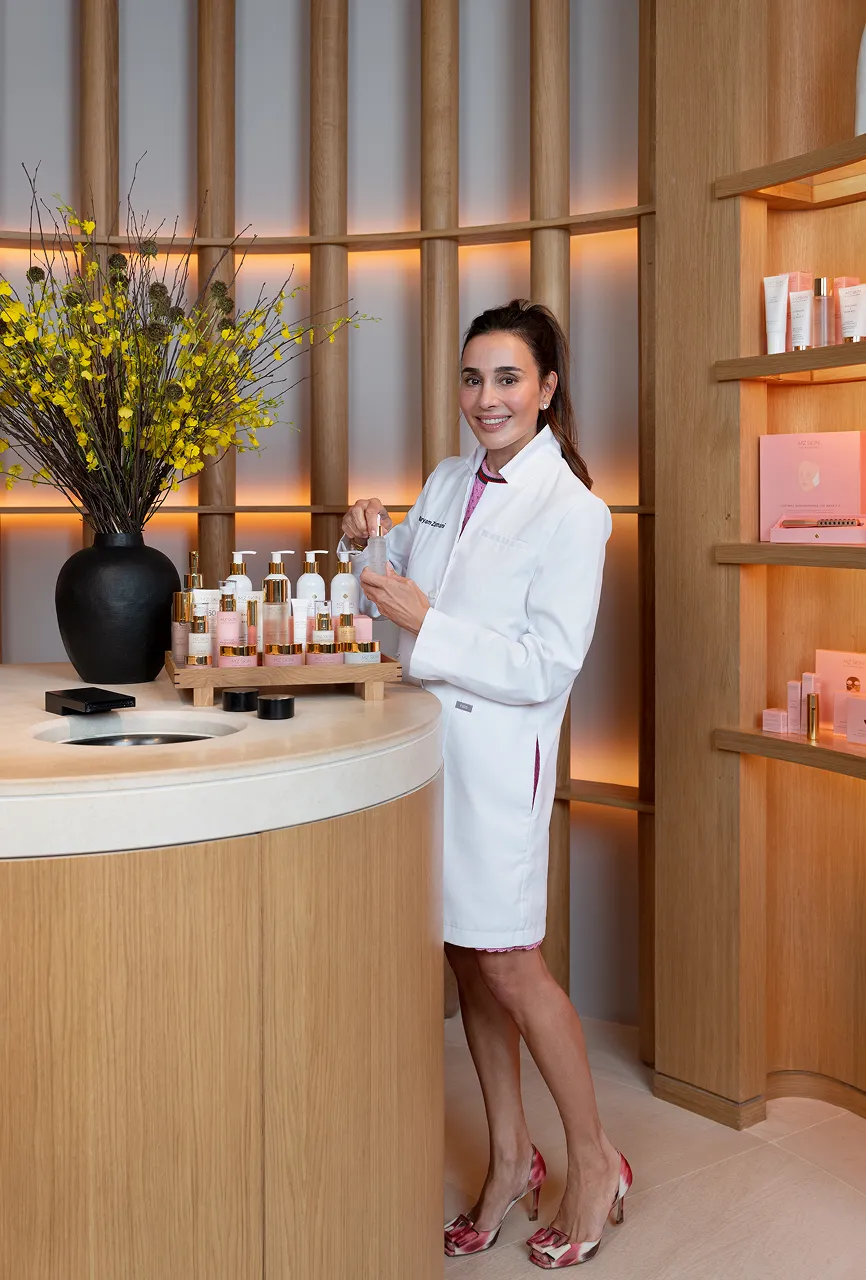Why You Should Check Your Moles: The Benefits of a Full Body Mole Check After Summer

As summer draws to a close, your skin may be showing the lasting effects of extended sun exposure. These effects can often be subtle, invisible to the naked eye, but nonetheless, they’re important and can impact your long-term health and wellbeing. While sunlight has its benefits and the warmth on our skin can feel wonderful, UV rays can penetrate deep into the skin, triggering changes at a cellular level. Over time, this can lead to DNA damage in skin cells, accelerate ageing, and increase the risk of pigmentation changes. It can also stimulate melanocytes, the pigment-producing cells in our skin, which may cause new moles to develop or existing moles to change. This is why a full body mole check, or mole mapping, is an important step to take in the post-summer months.
What Is Mole Mapping?
At our London clinic, mole mapping begins with a detailed consultation and full skin examination. Each mole is examined using high-resolution dermoscopic imaging with magnification, allowing us to record tiny structural changes: pigmentation, vascular patterns, and other markers not visible without magnification. These images are paired with whole-body photography, creating a comprehensive map of your skin for ongoing comparisons over time.
Why Post-Summer Timing Matters
After the summer months of increased UV exposure, new moles may appear or existing ones may subtly change. This is true even if you’ve been vigilant with SPF and sun protection. Our post-summer mole mapping in London provides the ideal baseline for monitoring those changes. By comparing images taken now to future ones, we can spot changes to the mole's shape, texture or colour early, which is important for cancer prevention and other long-term health issues.
Who is a Suitable Candidate for Mole Mapping?
Mole mapping is particularly valuable for anyone with:
- A large number of moles, making it challenging to track subtle changes over time.
- A personal or family history of skin cancer, particularly melanoma, where early detection is critical.
- Fair skin or a history of extensive sun exposure, which can increase sensitivity to UV damage.
- Unusual, irregular, or changing mole patterns, which require close and consistent monitoring.
Even if you don’t fall into one of these categories, mole mapping provides peace of mind by creating a detailed record of your skin, allowing for precise comparison at future check-ups. It can be used as a diagnostic tool, but also a way to better understand and protect the long-term health of your skin.
What to Watch Out For: Introducing the ABCDE Rule
Knowing what to check your moles at home is still essential, even with mole mapping checks at our clinic. The ABCDE mnemonic is a trusted guide in spotting early signs of melanoma:
- Asymmetry: half of the mole looks different from the other
- Border: irregular or blurred edges
- Colour: uneven or multiple pigment shades
- Diameter: above 6 mm or growing
- Evolving: changes in size, shape, colour, or new symptoms like scabbing or bleeding
If you have any concerning signs, contact a dermatologist promptly for further examination. Mole mapping is often used in conjunction with regular dermatological check-ups to ensure ongoing skin surveillance and peace of mind.
Daily Habits to Protect Your Skin All Year Round
A full body mole check after the summer sets the foundation for healthy skin all year. Alongside your mole mapping programme, we recommend you follow these simple daily habits to protect your skin from UV damage and reduce your risk of skin cancer:
- Daily SPF: Apply a broad-spectrum SPF 30+ every morning, even on cloudy days. Reapply every four hours outdoors, and make sure to apply SPF around the eyes as the skin is more delicate and susceptible to UV damage.
- Avoid Peak Sun: Seek shade between 11 am and 4 pm, when UV rays are strongest.
- Cover Up: Wear UPF-rated clothing, a wide-brimmed hat, and UV-blocking sunglasses when the sun is shining bright.
- Regular Self-Checks: Examine your skin every 3–4 months and book a professional review with us if you spot new or changing moles.
Book Your Consultation
As a leading oculoplastic surgeon with a special interest in skin health and early detection, Dr Maryam Zamani offers meticulous full-body mole checks and advanced mole mapping in London. Her precise, detail-driven approach ensures every mole is assessed, giving you clarity, reassurance, and a proactive plan for your skin health.
Book your consultation for Mole Mapping in London with Dr Maryam Zamani
Testimonials
Trustindex rating score: 4.7 of 5, based on 222 reviews
Book Consultation
As a leading Oculoplastic Surgeon with special interest in Facial Aesthetics, Dr. Maryam Zamani has garnered a global reputation - both in the US and UK - for her meticulous attention to detail and sought-after techniques for eyes and facial aesthetics.
Located on the Kings Road, our clinic is easy to reach from Chelsea, Kensington, Belgravia, Knightsbridge, South Kensington, Fulham and Battersea. We are positioned just moments from Sloane Square with excellent transport links across Central and South West London.
Book Now.avif)



